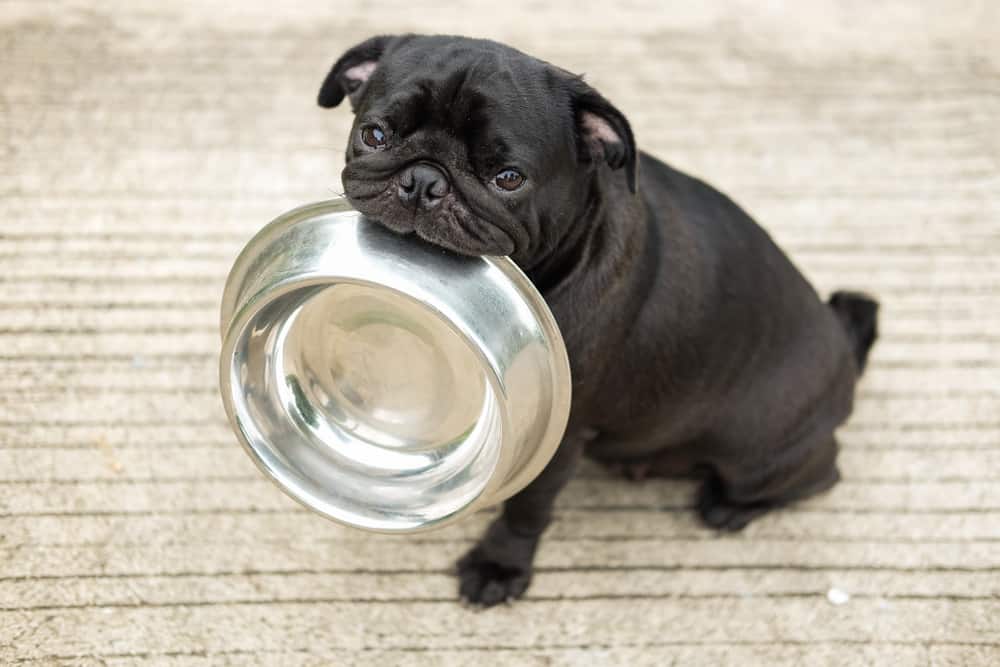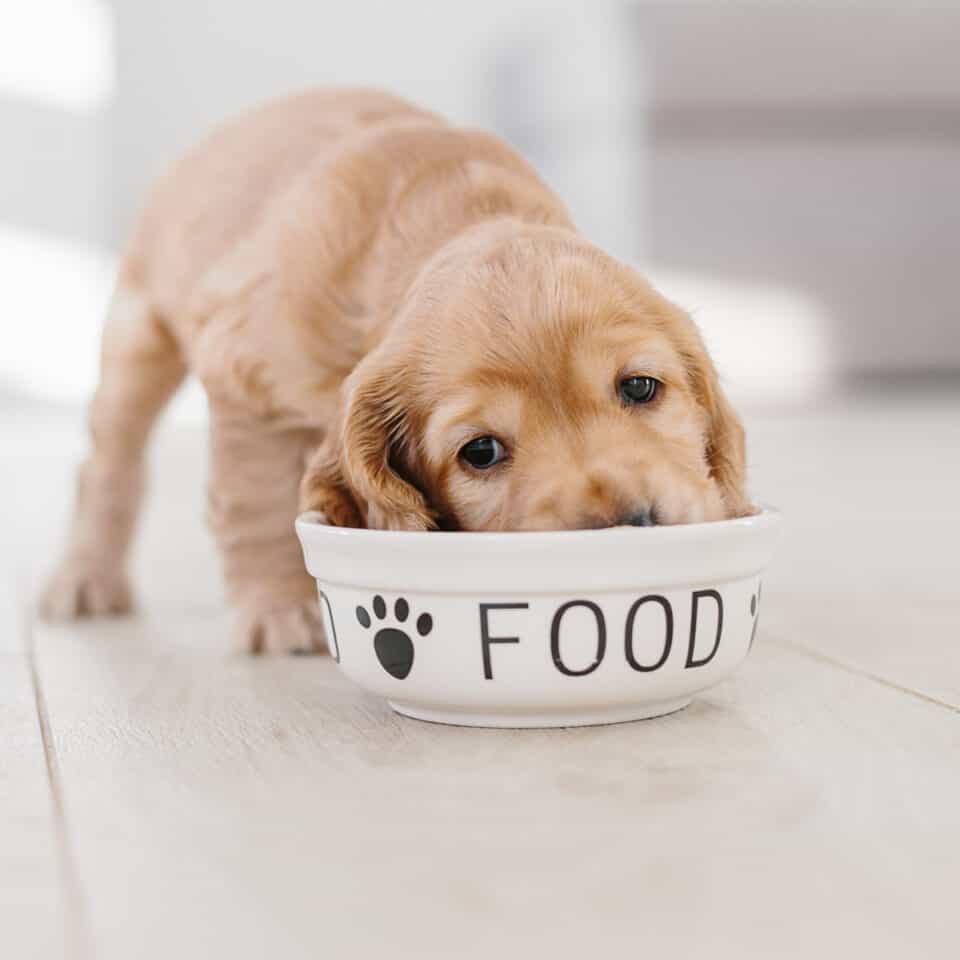All products and services on Project PAWS are independently selected by our editors, contributors, and veterinary experts. This post contains affiliate links. As an Amazon Associate I earn from qualifying purchases.To learn more, view my disclosure policy.
Last Updated on October 28, 2020 by Aimee
What to feed your new puppy: The feeding need of puppies are as diverse as the options of different brands of dog food. Looking at all the choices often causes more confusion. To break down what your puppy needs for food the best way is to break it down by age.
Just like humans there are different growth periods in puppies that change with age. Like human babies, puppies start out needing many small meals a day, of a food formulated for their special nutritional requirements. Most, but not all, dogs finish meals quickly. To discourage picky habits, feed at regular times in regular amounts and don’t leave food down for more than 10 minutes.

6–12 weeks:
This is a major growth period for dogs, therefore a diet specially formulated to meet the adequate nutritional demand puppies should be fed.
Puppies should be fed 4 meals ahead of a mix of dry food and canned food formulated for you puppies. If you have a large breed dog pick a food for large breed and small breed food for small dogs.
3–6 months:
At 3 months you can decrease feedings from four to three a day. The food should still be formulated for puppies still and you can wean off the canned food if desired. Canned food does cost more because there is moisture in the food. Some breeds of dogs need the extra moisture in their diet as they don’t drink as often as they should. Puppies in general forget to drink enough, so continuing to add moisture in their diet with either wet food or by adding a cup of water over your pups kibble is a good idea.
6–12 months:
Large breed dogs can move to meal twice a day of dry or wet or a combination, but it should still be puppy food formulated for large breed dogs. Small breed mature faster than large breeds. Small breeds can make the switch to adult dog food at 7 to 9 months; bigger breeds at 12, 13, even 14 months. Err on the side of caution: Better to be on puppy food a little too long than not long enough.

1yr:
Dog food companies give feeding guides on their food, but remember this is just a loose guide. The best way to keep your pup’s figure in fit condition is to watch their body condition. Body condition, not the amount on the package of food, or amount eaten or left in the bowl, should determine portion sizes. Metabolism and body type, and nutritional requirements vary from dog to dog so your dog size body will tell you what the need. Ask your vet about body condition and for them to show you on their chart, where your dog is and how to achieve the idea weight for your dog as an individual. If your puppy occasionally skips a meal or picks at food, don’t worry.
Chart Your Puppy’s Weight and Growth
There are growth-and-weight charts available in print and online. Weigh the puppy weekly and record their progress, comparing them to breed-appropriate weight charts.
Large breed dogs especially can be prone to orthopedic problems, due to stress on immature joints and obesity leads to diabetes, heart disease, tiredness and organ failure.
No People Food
Believe it or not dogs do have taste buds and one bite of people food can lead to more problems of begging, upset stomach and serious illness in all dogs. It is best not to start something you can’t break later in life. It is easy to spoil your cute puppy, but when they grow to a big dog begging or sitting on the table to get scraps isn’t so cute.

It is no accident pleading gaze of a begging dog can be irresistible. During the canine’s long partnership with man, the they have perfected cunning methods of exploiting the human habit of associating food with affection. In prehistoric times semi-domesticated canines first cultivated human beings as a food provider. As the two species grew closer, dogs modified begging behaviors to maximize results: The more pathetic a dog seemed, the more scraps were tossed his way. Dogs have since refined this approach into a low-risk, high-reward hunting technique. Don’t ever underestimate the intelligence of your dog when it comes to getting things they want.
Don’t be fooled!!! This pathetic look on your pup’s face is not really a test of your love, it is really a scam. Allowing your dog to guilt you into overfeeding them, or serving them a steady diet of table scraps in a misguided show of affection, can have harmful or even fatal results.

